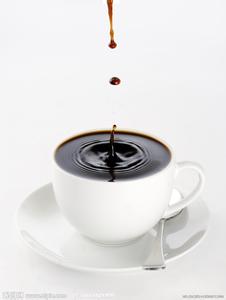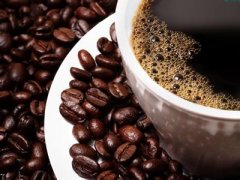Knowledge of coffee extraction Espresso extraction of Al's Rule
Al Critzer's understanding of Espresso extraction has now become the most common Espresso concept in Europe and America.

The translation reads as follows:
Start with the result of getting a perfect cup of Espresso at 30cc/ 30sec. These two values depend on the beans, of course, and differences in baking methods, baking degrees, and recipe proportions naturally lead to changes in the reference point.
The amount of extraction is inversely proportional to the extraction time:
When the amount of extraction is higher, the coffee powder must be in contact with hot water for a shorter time (to avoid over-extraction).
Conversely, when the amount of extraction is reduced, the contact time between coffee powder and water should be increased (to avoid under-extraction).
Al formula: For every 5cc increase in extraction volume, the extraction time is subtracted by 1sec. Otherwise, add 1sec.
For example, when the extraction amount is increased to 45cc, 30-(45-30) divided by 5=27, the extraction time is reduced to 27sec.
When the extraction amount is 60cc, the extraction time becomes 24sec.
This formula, within reasonable limits of 0.75-2.5oz Espresso, quickly and correctly hunts for sweet spots, effectively captures desirable ingredients, and maintains a balance between over-extraction and under-extraction. The main method of control is to adjust the grinding thickness.
In addition, Al Critzer also explained the definition of Ristretto:
Ristretto is a drink that is very different from normal espresso.
If the grinding is unchanged, use the normal espresso flow rate and end the extraction early, for example, the original 30sec/ 30cc flow rate, only 25cc, this is a cup of insufficient extraction results, because it has not reached the sweet spot (Sweet Spot).
The so-called ristretto means restricted, and the customary practice is 25cc/ 30-35sec.
All sensory sensations, whether good or bad, are accentuated: what the eye sees, what the nose smells, what the tongue tastes.
Ristretto is characterized by a mouse tail that is extremely thin, plus a darker brown crema, so it is also adjusted by grinding.
Important Notice :
前街咖啡 FrontStreet Coffee has moved to new addredd:
FrontStreet Coffee Address: 315,Donghua East Road,GuangZhou
Tel:020 38364473
- Prev

Coffee Culture in Shanghai the Development of Coffee Culture in China
Coffee is an imported product. In the early years, coffee was translated into a variety of names, and even fattened. With the opening of Shanghai, coffee sprang up in the concession. Many fashionable Shanghainese also go to taste fresh, often complaining bitterness and shouting that it tastes as bad as cough potion. However, with the popularity of western food in Shanghai, coffee is gradually accepted by most people. By Zhu Wenbing.
- Next

Coffee common sense coffee boiler hot water can not drink
Friends who intend to make coffee machines must know that coffee machines have a group of things called hot water pipes and hot water pipe switches, and their function is to release hot water from the coffee machine boiler. I often see many people use this set of parts of the coffee machine to release hot water from the boiler in the machine for making tea, warming cups, washing appliances, direct drinking, and making other milk tea products. because coffee
Related
- Beginners will see the "Coffee pull flower" guide!
- What is the difference between ice blog purified milk and ordinary milk coffee?
- Why is the Philippines the largest producer of crops in Liberia?
- For coffee extraction, should the fine powder be retained?
- How does extracted espresso fill pressed powder? How much strength does it take to press the powder?
- How to make jasmine cold extract coffee? Is the jasmine + latte good?
- Will this little toy really make the coffee taste better? How does Lily Drip affect coffee extraction?
- Will the action of slapping the filter cup also affect coffee extraction?
- What's the difference between powder-to-water ratio and powder-to-liquid ratio?
- What is the Ethiopian local species? What does it have to do with Heirloom native species?

